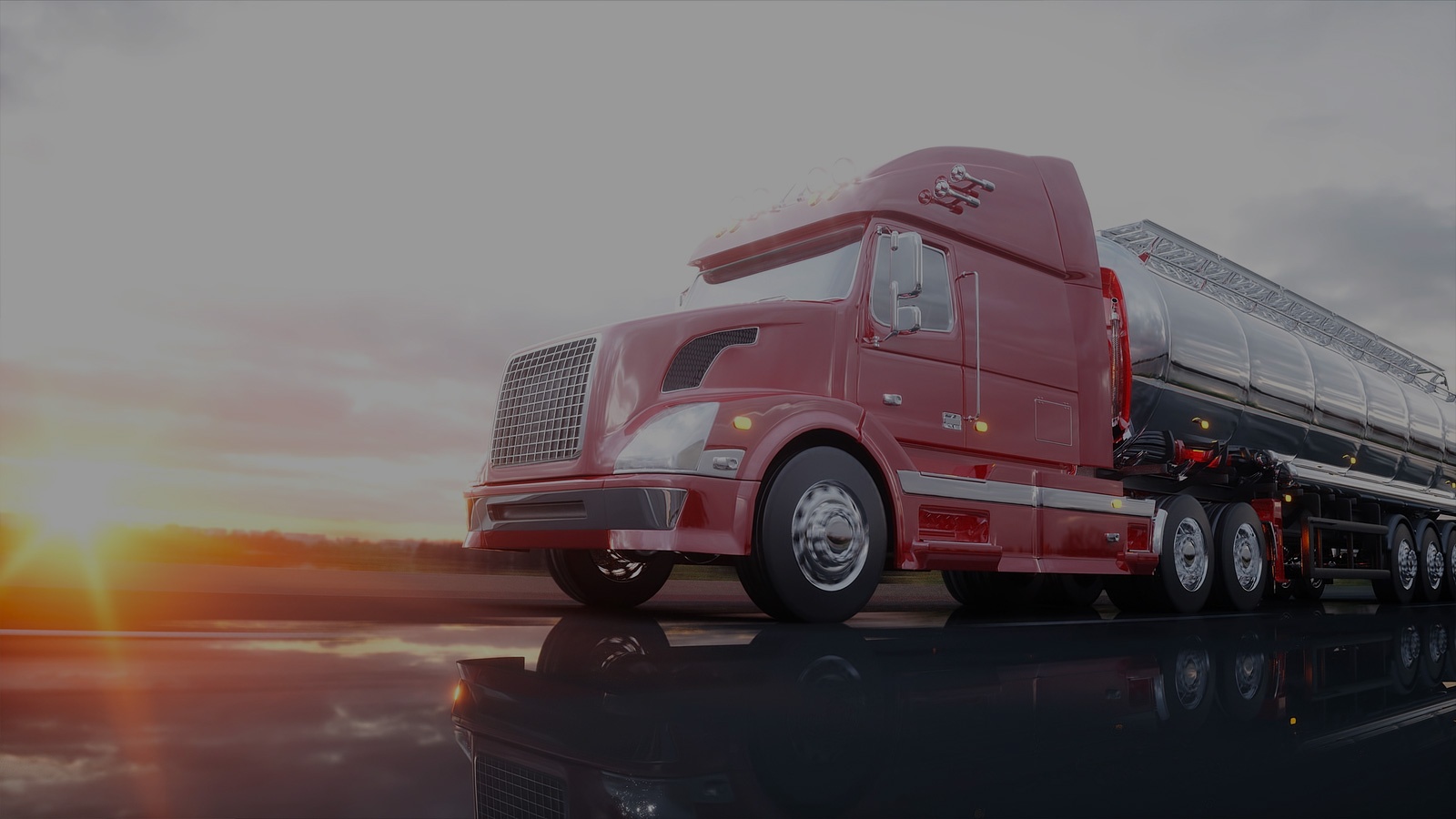Bulk liquid transport—especially when it involves hazardous chemicals—carries higher risks than most other types of transportation. For example, losing two pallets of dry goods in transit is an inconvenience, but an accident involving bulk chemicals could cause environmental damage, production delays, and regulatory headaches. With such high stakes, expertise and careful planning are essential.
To help you better understand the equipment used in bulk liquid transportation, we’ve updated this guide with key information and included a new section on hose adapters—an often-overlooked yet crucial component of liquid bulk shipping.
Bulk Liquid Transport Equipment
Tank Trailer
The typical liquid bulk trailer holds 6,000–7,000 gallons, though some carriers offer smaller, “tight fill” tanks with a 5,000-gallon capacity. The advantage of a smaller tank is that it minimizes agitation during transit, reducing the likelihood of foaming—an important consideration for certain liquids like cleaning agents, adhesives, or food ingredients.
A bulk liquid tank is usually made of stainless steel or aluminum and may be insulated or non-insulated. Trailers can either have a single compartment or multiple compartments (typically 2–4) to transport different products simultaneously. Special food-grade trailers, designed for sanitary transport, are used for consumable products such as fruit juice, vegetable oil, and food ingredients.
Each trailer has a dome at the top, which opens for loading. During the loading process, it is critical that only the hose and product enter through the dome to prevent contamination.
Hose Adapters: An Overlooked but Critical Component
 When a tanker truck arrives at a chemical or food-grade facility to load or unload its product, the facility’s hose must connect seamlessly to the valve on the liquid bulk tank truck. However, the hose fittings and the tank valves often have different sizes or configurations. This is where hose adapters come in—serving as essential connectors between mismatched fittings.
When a tanker truck arrives at a chemical or food-grade facility to load or unload its product, the facility’s hose must connect seamlessly to the valve on the liquid bulk tank truck. However, the hose fittings and the tank valves often have different sizes or configurations. This is where hose adapters come in—serving as essential connectors between mismatched fittings.
Using the wrong adapter, or not having one available, can cause costly delays, safety hazards, or product loss. With Bulk Connection, these concerns are handled well in advance. We make sure that the right adapters are identified and available before the truck arrives. This level of planning ensures that loading or unloading goes smoothly, with no last-minute surprises—just another reason why it pays to partner with an expert broker like Bulk Connection.
Temperature Control
Some liquid bulk trailers are insulated and equipped with steam coils to maintain temperature-sensitive products. When the truck is parked, the coils are connected to an external steam source, which circulates heat throughout the trailer.
Some trailers also offer in-transit heating by piping antifreeze from the tractor’s radiator through coils surrounding the tank. However, this system only preserves existing heat and does not warm a product beyond its starting temperature. For some shipments, this can be a limitation, so it’s crucial to discuss your product's specific requirements with a knowledgeable bulk liquid carrier to avoid temperature-related issues.
Weight and Volume Considerations
Volume is the key measurement in liquid bulk transport. Knowing the number of gallons to be shipped will determine how many trucks are needed. However, weight is also a critical factor for regulatory compliance.
Most trailers can carry up to 45,000 pounds of liquid without exceeding the Department of Transportation’s (DOT) 80,000-pound gross vehicle weight limit. It’s also essential to note that liquids naturally seek their own level, making it nearly impossible to redistribute weight to balance the axles once the product is loaded.
Pumps and Compressors
Loading and unloading bulk liquids require pumps or air compressors. Air compressors push product through hoses with compressed air and are ideal for many non-flammable liquids. They offer a cleaner solution since the liquid doesn’t come into contact with the compressor itself.
However, compressors generate static electricity, which makes them unsuitable for flammable products. In these cases, pumps are used instead. Although pumps are effective for flammable or highly viscous liquids, they require thorough cleaning after use to avoid contamination.
For very thick liquids, both systems may be required. The air compressor pushes the product toward the pump, which then moves it through the hoses and into the destination container.
Key Questions That Drive Equipment Needs
To ensure a successful shipment, carriers or brokers will ask these critical questions:
- What is the product?
- Are there special properties? (Hazardous? Temperature-sensitive? Requires insulation?)
- How many gallons are being transported?
- What type of container will the product load from?
- What is the hose width required for loading/unloading, and how many 20-foot lengths will you need?
- What fittings and adapters are required?
- What type of container will receive the product?
- Does the receiving facility require specific safety equipment?
By answering these questions in advance—or working with a broker like Bulk Connection who knows what to ask—you can avoid delays and ensure the right equipment is in place for your shipment.
Conclusion: Partner with Experts for Seamless Liquid Bulk Shipping
Transporting bulk liquids requires more than just specialized equipment—it demands experience, attention to detail, and preparation. The inclusion of hose adapters, for example, might seem minor, but it can prevent costly mistakes and delays. With Bulk Connection, every detail is accounted for ahead of time, ensuring your product is transported safely, efficiently, and without surprises.
If you’re ready to move your liquid bulk products, contact Bulk Connection today. With over 35 years of experience and access to an extensive network of carriers across North America, we’ve got what it takes to get the job done right.




